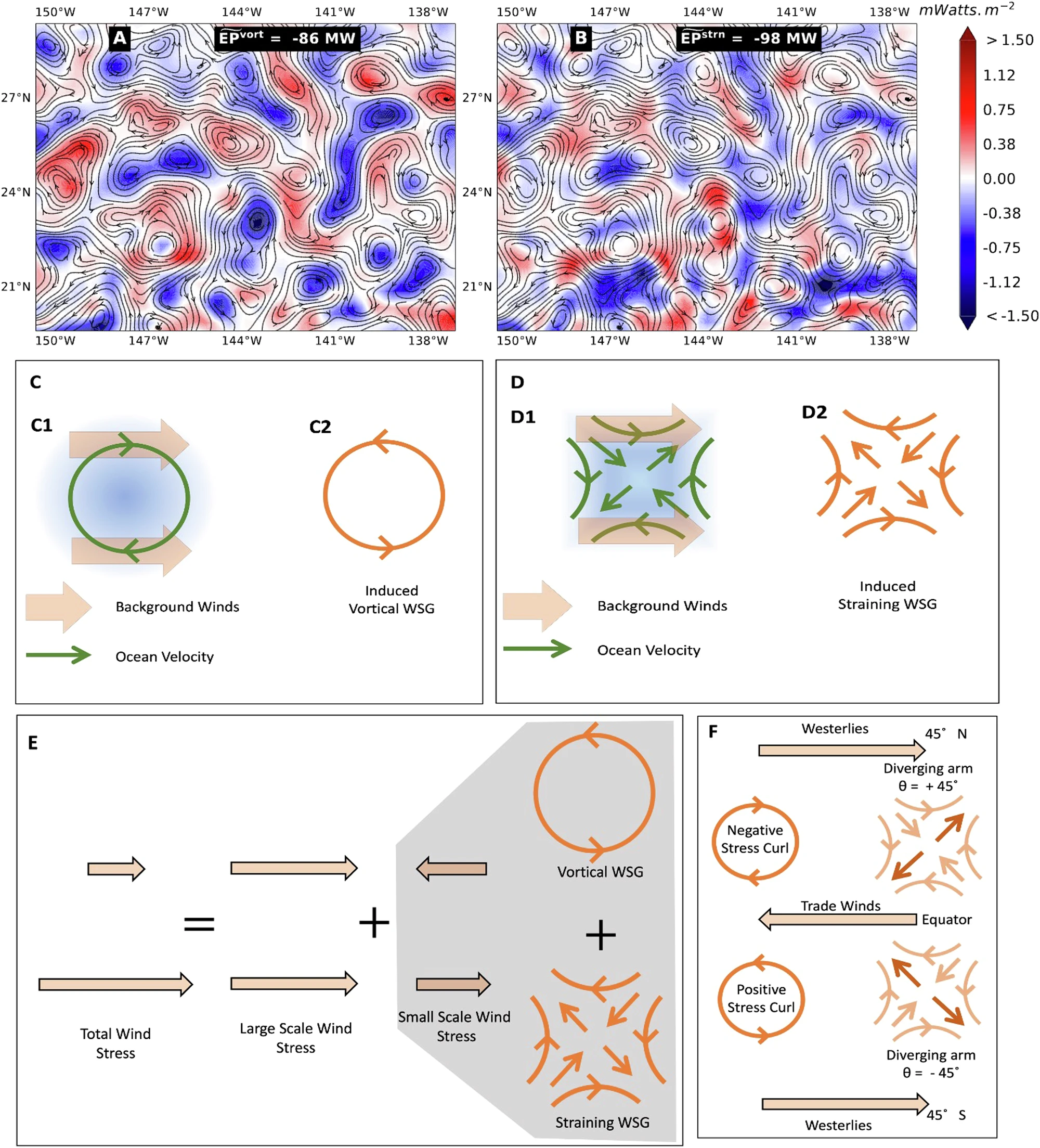Highlighted Publications
2025


Shikhar Rai, J. T. Farrar, H. Aluie.
Atmospheric wind energization of ocean weather
Nature Communications, 16(1), 1172.
[DOI: 10.1038/s41467-025-56310-1]
In this work, we show:
- How to decompose mesoscale wind work to work on strain and work on vorticity, without using binary subjective Okubo-Weiss criterion.
- On global average, like ocean mesoscale eddies, mesoscale strain are also damped by wind
- Not all mesoscale eddies and strain are damped by wind, some are energized. This depends on relative orientation of wind stress gradients with respect to ocean surface current gradients.
- The gradients wind stress that arise due to ocean-current feedback always cause mesoscale motions to damp, but the wind stress gradients due to prevailing gradients in the winds itself can cause both energization and damping.
- The effect of prevailing wind gradients on mesoscale wind work can be seen as anticyclonic eddies being energized and cyclonic eddies being damped in the subtropcs away from regions with High KE like WBC and ACC. Similar wind-work pattern is seen in the straining motions
2021


Shikhar Rai, M. Hecht, M. Maltrud, H. Aluie.
Scale of oceanic eddy killing by wind from global satellite observations
Science Advances, 7(28), eabf4920.
[DOI: 10.1126/sciadv.abf4920]
In this work, we show:
- The critical lengthscale below which wind damps ocean eddies on global average is 260 km. Oceanic motions of lengthscales larger than 260 km are energized by winds
- The critical lengthscale is a function of space, and is near spectral peak of ocean Kinetic Energy
- The wind damping of ocean eddies peaks in winter with wind magnitude.
- The damping of ocean eddies are concentrated in the highly energetic regions and are of comparable magnitude to other energy pathways like inverse cascae, baroclinic and barotropic conversion.